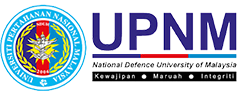AN OVERVIEW ON RECENT ACCOMPLISHMENT OF NANOCELLULOSE AS SENSING MATERIAL IN VARIOUS APPLICATIONS
Keywords:
Nanocellulose, Sensing materialAbstract
Polymers made from plant and animal sources are attracting a lot of attention in the research area due to their cost-effectiveness, renewable, and sustainable characteristics. Their abundance in nature, nano-dimension size, large surface area, stability, and biocompatibility make nanocellulose (NC) one such polymer that has piqued researchers' attention. By 2025, the nanocellulose market is expected to be worth USD 783 million. Therefore, fast advances in nanotechnology and material sciences have aided nanocellulose research, culminating in their development as potential biomaterials. Nanocellulose has been studied extensively in numerous sectors such as healthcare, household product, electronic, renewable energy, and food agricultural. Nanocellulose applications in the sensing sector have gotten a lot of interest recently. The latest advancements in nanocellulose, with a particular emphasis on their performance as sensing material for various applications, are presented and explored in depth here.
Downloads
Downloads
Published
How to Cite
Issue
Section
License

This work is licensed under a Creative Commons Attribution-NonCommercial-ShareAlike 4.0 International License.



